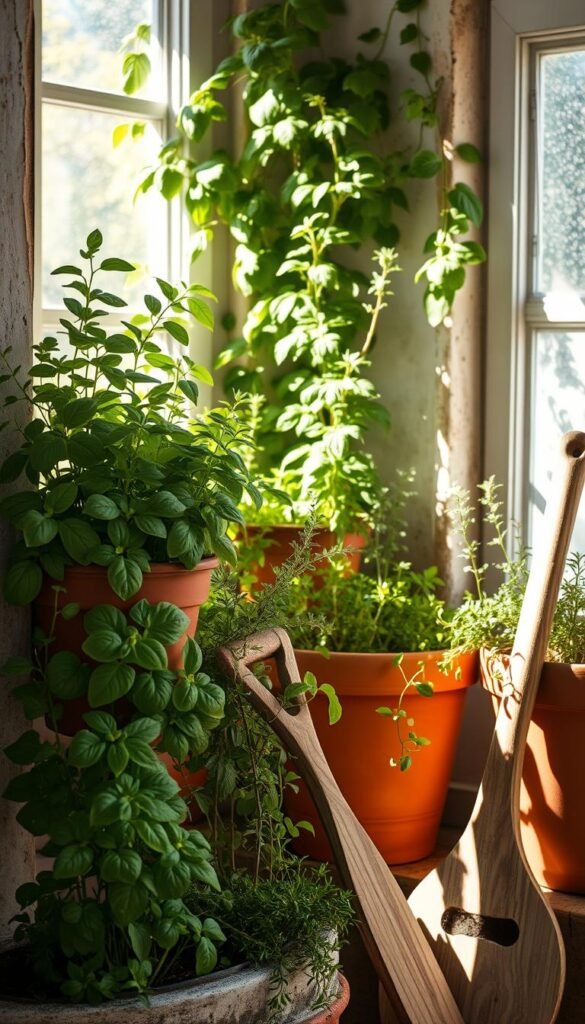Imagine stepping outside your door to snip fragrant leaves that transform ordinary meals into culinary masterpieces. Growing your own herbs isn’t just a trend—it’s a flavor-packed, budget-friendly way to elevate everyday cooking. Best of all, you don’t need a sprawling backyard to get started.
Store-bought dried varieties can’t compete with the vibrant taste of freshly picked basil, rosemary, or mint. Even better? A single $3 plant yields months of harvests, while supermarket bundles cost nearly as much per use. Whether you’re working with a sunny windowsill or a fire escape, creative setups like vertical planters let you grow herbs anywhere.
Over four decades of trial and error taught us one thing: success starts with simplicity. This guide skips the overwhelm and shares proven methods for thriving plants—from choosing the right soil to avoiding overwatering. You’ll learn to dodge common pitfalls while celebrating quick wins like your first pesto made with homegrown basil.
Ready to savor richer flavors and nurture a rewarding new hobby? Let’s dig into the secrets of cultivating your own aromatic oasis.
Getting Started With Your Herb Garden
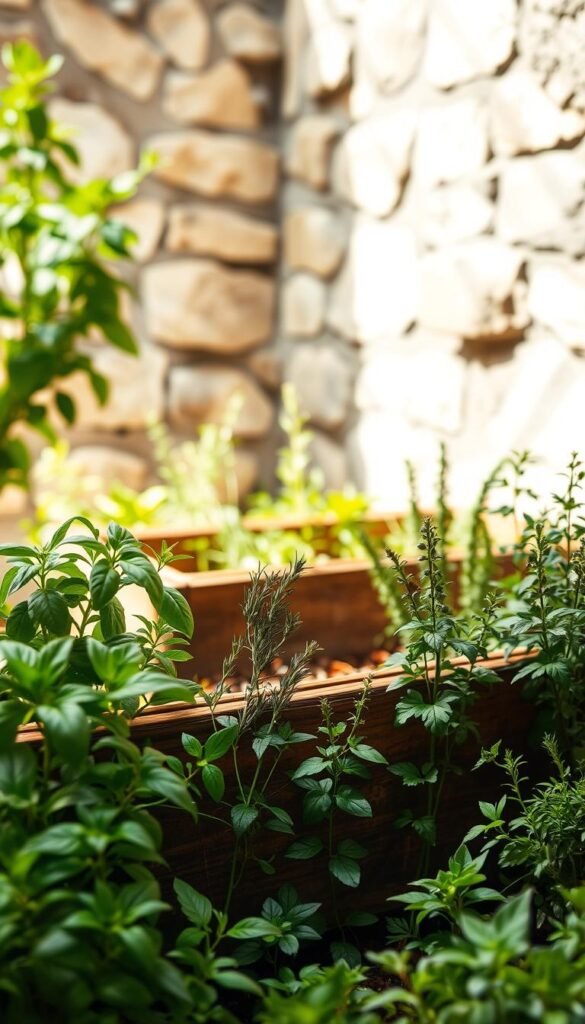
Starting your flavorful journey is easier than you think. First, map out where your plants will live. Even a kitchen countertop or bookshelf can become a productive growing zone with the right setup.
Identifying Your Space and Light Conditions
Watch how sunlight moves through your space for 2-3 days. South-facing windows often provide full sun (6+ hours daily), ideal for basil and rosemary. East-facing spots usually offer gentler morning light, perfect for mint or parsley.
Gathering Essential Tools and Supplies
Begin with these basics:
| Tool | Purpose | Smart Choice |
|---|---|---|
| 4″ Starter Pots | Germinating seeds | Biodegradable coconut coir |
| 8″ Deep Containers | Mature plants | Terracotta with drainage |
| Pruning Snips | Harvesting leaves | Stainless steel micro-tips |
Use seed-starter mix for young plants and switch to nutrient-rich potting soil after 4 weeks. For small spaces, consider indoor hydroponic systems that use 90% less water than traditional methods.
Selecting the Best Herbs to Grow
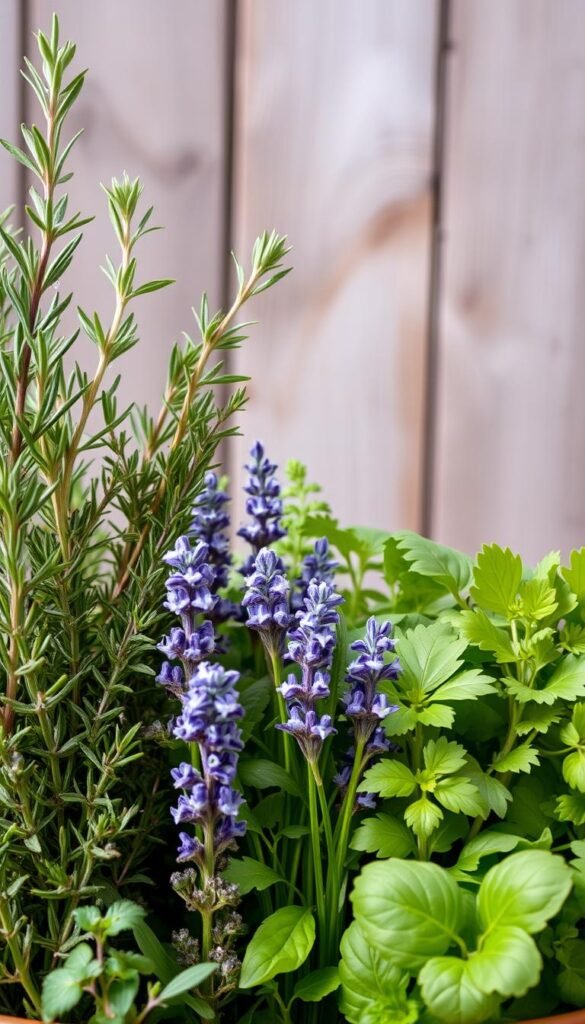
Your herb selection shapes your garden’s success and your kitchen’s flavor potential. Understanding growth cycles helps you plan for year-round harvests. Let’s explore varieties that thrive whether you’re planting in pots or garden beds.
Herbs Perfect for Beginners and Experts
Annuals like basil and cilantro complete their life cycle in one season. They’re ideal for quick results but need replanting yearly. Perennials like rosemary and thyme return reliably, offering steady yields with minimal effort.
| Type | Examples | Key Benefit |
|---|---|---|
| Annual | Basil, Dill, Cilantro | Fast-growing for instant gratification |
| Perennial | Sage, Thyme, Chives | Low-maintenance long-term producers |
Basil tops the easy-grow list—snip a stem, place it in water, and watch new roots form within days. Chives thrive in tight spaces, sprouting tender leaves faster than you can say “baked potato topping.”
For dual-purpose picks, try antioxidant-rich sage. Its earthy flavor elevates roasted dishes while supporting wellness. Prefer something versatile? Mint adapts to shade or sun, though it’s best contained to prevent spreading.
Pro tip: Plant quick-growers like cilantro every 3 weeks for nonstop harvests. This succession planting trick keeps your salads and salsas lively all summer.
Understanding Soil, Sunlight, and Container Needs
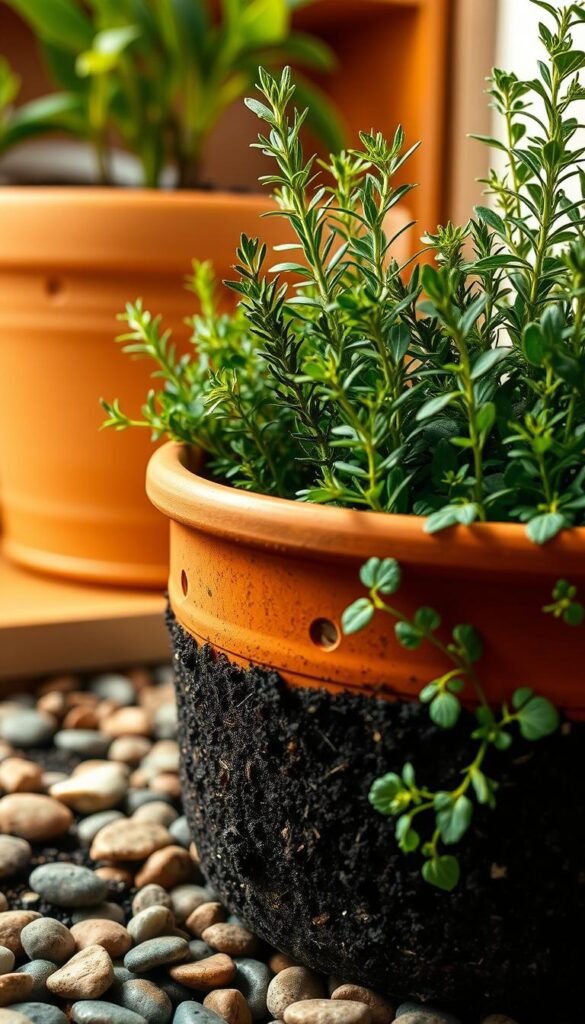
The secret to vibrant herbs lies beneath the surface and above the soil. Getting these elements right means stronger flavors and happier plants. Let’s break down what your green companions truly need to thrive.
Tips for Rich Soil and Proper Drainage
Your herbs’ roots hate wet feet. Use a mix of potting soil and perlite for quick drainage—it prevents rot while keeping moisture where it counts. Always choose pots with multiple holes at the bottom. Terracotta works wonders because it breathes better than plastic.
Deep containers matter more than you think. Aim for 10-12 inch sides to let roots spread. Shallow pots dry out too fast, especially for thirsty plants like basil. Test drainage by watering until it flows freely from the base. If puddles form, add more perlite.
Maximizing Full Sun Exposure
Mediterranean herbs like rosemary and oregano crave six hours of direct sunlight daily. Track how light moves in your space using a sun mapping app or simple hourly checks. South-facing windows often deliver the goods.
Notice pale leaves or slow growth? That’s your plant begging for more rays. Rotate pots weekly so all sides get equal light. For shady spots, try mint or parsley—they’ll tolerate less sun but still need at least four hours.
- Water when the top inch of soil feels dry
- Crumbly texture = perfect drainage
- Yellow leaves often mean overwatering
Essential Herb Garden Ideas for Fresh Cooking and Aromatics
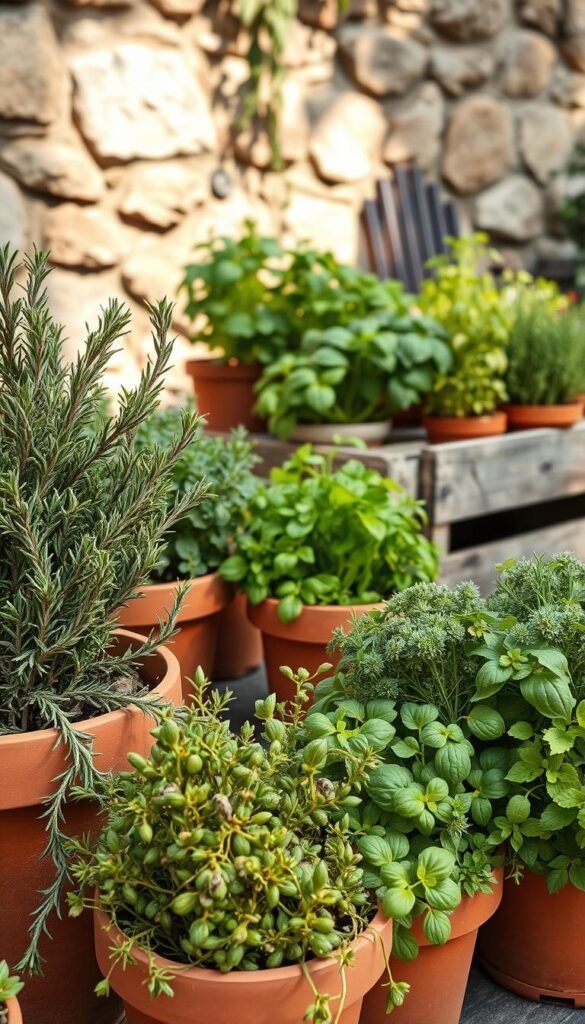
Unlock new dimensions in your meals with herbs that pull double duty as flavor boosters and natural air fresheners. Basil varieties like sweet, Thai, and purple types offer distinct personalities—toss the bold leaves into caprese salads or blend into vibrant pesto sauces.
Pair delicate chervil with poached eggs or fold into creamy dressings for spring greens. Robust rosemary transforms roasted potatoes and focaccia, while lemon balm adds citrusy zing to iced teas and fruit salads. For pickling adventures or dill dip cravings, feathery fronds deliver that signature tang.
These multitaskers shine beyond the plate:
- Mint varieties freshen mojitos and bathroom aromas
- Bergamot leaves double as tea ingredients and marinade enhancers
- Sage’s earthy notes elevate holiday stuffing while purifying indoor air
Perennial picks like thyme and rosemary keep your companion plant pairings productive year after year. Snip chives over baked potatoes in winter, then harvest fresh parsley for summer tabbouleh—homegrown varieties outshine store-bought versions in both flavor and shelf life.
Pro tip: Freeze herb-infused olive oil cubes to capture peak freshness for off-season cooking. Your future self will thank you when January’s soups need a flavor lift!
Indoor Versus Outdoor Herb Garden Setups
Your herb-growing adventure doesn’t stop at the back door. Whether you’re tending plants on a sunny countertop or maximizing balcony space, smart strategies keep flavors fresh year-round.
Benefits of Growing Herbs Indoors
Indoor setups let you snip basil for pasta or mint for tea, rain or shine. Use self-watering pots to maintain moisture without daily checks. Compact systems like Aerogardens work magic in low-light areas—their LED panels mimic natural sunlight for steady growth.
Pair herbs with similar needs for best results. Try rosemary and thyme in one container (both love drier soil) or basil with parsley (they crave more water). Shallow-rooted varieties thrive in 6-inch pots, while deeper containers suit sprawling roots like mint.
Adapting Outdoor Techniques for Small Spaces
Transform tight corners into lush producers with vertical planters. Hang pots of oregano and sage on railings—they’ll soak up full sun while saving floor space. Protect tender plants like basil from harsh weather by moving containers under eaves during storms.
Combine herbs with balcony-friendly vegetables for mutual benefits. Cherry tomatoes shield thyme from afternoon heat, while chives deter pests from peppers. In winter, insulate outdoor containers with bubble wrap to extend your harvest.

